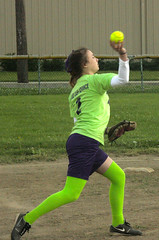
Dr. Fiona Coupar of Glasgow University, Academic Section of Geriatric Medicine, Glasgow, UK and Alex Pollock of Glasgow Caledonian University, Nursing Midwifery and Allied Health Professions Research Unit, Glasgow, UK report on a study to systematically review and summarize the current available literature on prognostic variables relating to upper limb recovery following stroke. To identify which, if any variables predict upper limb recovery following stroke.
They completed searches in MEDLINE, EMBASE, AMED, CINAHL and Cochrane CENTRAL databases. Searches were completed in November 2010.
Their studies included if predictor variables were measured at baseline and linked to an outcome of upper limb recovery at a future time point. Exclusion criteria included predictor variables relating to response to treatment and outcome measurements of very specific upper limb impairments such as spasticity or pain. Two independent reviewers completed data extraction and assessed study quality.
The results found were that fifty-eight studies met the inclusion criteria. Predictor variables which have been considered within these studies include; age, sex, lesion site, initial motor impairment, motor-evoked potentials andsomatosensory-evoked potentials. Initial measures of upper limb impairment and function were found to be the most significant predictors of upper limb recovery; odds ratio 14.84 (95% confidence intervals (CI) 9.08–24.25) and 38.62 (95% CI 8.40–177.53), respectively.
The conclusions reached were that interpretation of these results is complicated by methodological factors including variations in study populations, upper limb motor outcome scales, timing of baseline and outcome assessments and predictors selected. The most important predictive factors for upper limb recovery following stroke appears to the initial severity of motor impairment or function.
When a stoke causes upper limb disability the ArmTutor plays a vital role in recovery during physiotherapy.
The ArmTutor™ system has been developed to allow for functional rehabilitation of the upper extremity. The system consists of an ergonomic wearable arm brace and dedicated rehabilitation software. The ArmTutor™ system allows for a range of biomechanical evaluation including speed, passive and active range of motion and motion analysis of the upper extremity. Quantitative biomechanical data allow for objective evaluation and rehabilitation treatment follow up. The ArmTutor™ (including the HandTutor, LegTutor, 3DTutor) rehabilitation concept is based on performing controlled exercise rehabilitation practice at a patient customized level with real time accurate feedback on the patient’s performance. The exercises are designed in the form of challenging games that are suitable for a wide variety of neurological and orthopedic injury and disease.
The games challenge the patient to perform the exercise task to their best ability and to continue exercise practice.
The ArmTutor™ allows for isolated and a combination of elbow and three directional shoulder treatment. The system provides detailed exercise performance instructions and precise feedback on the patients exercise performance. Controlled exercise of multijoints within the normal movement pattern prevents the development of undesired and compensatory joint movement and ensures better performance of functional tasks.
The ArmTutor™ system is used by many leading rehabilitation centers worldwide and has full FDA and CE certification. See www.handtutor.com
No comments:
Post a Comment